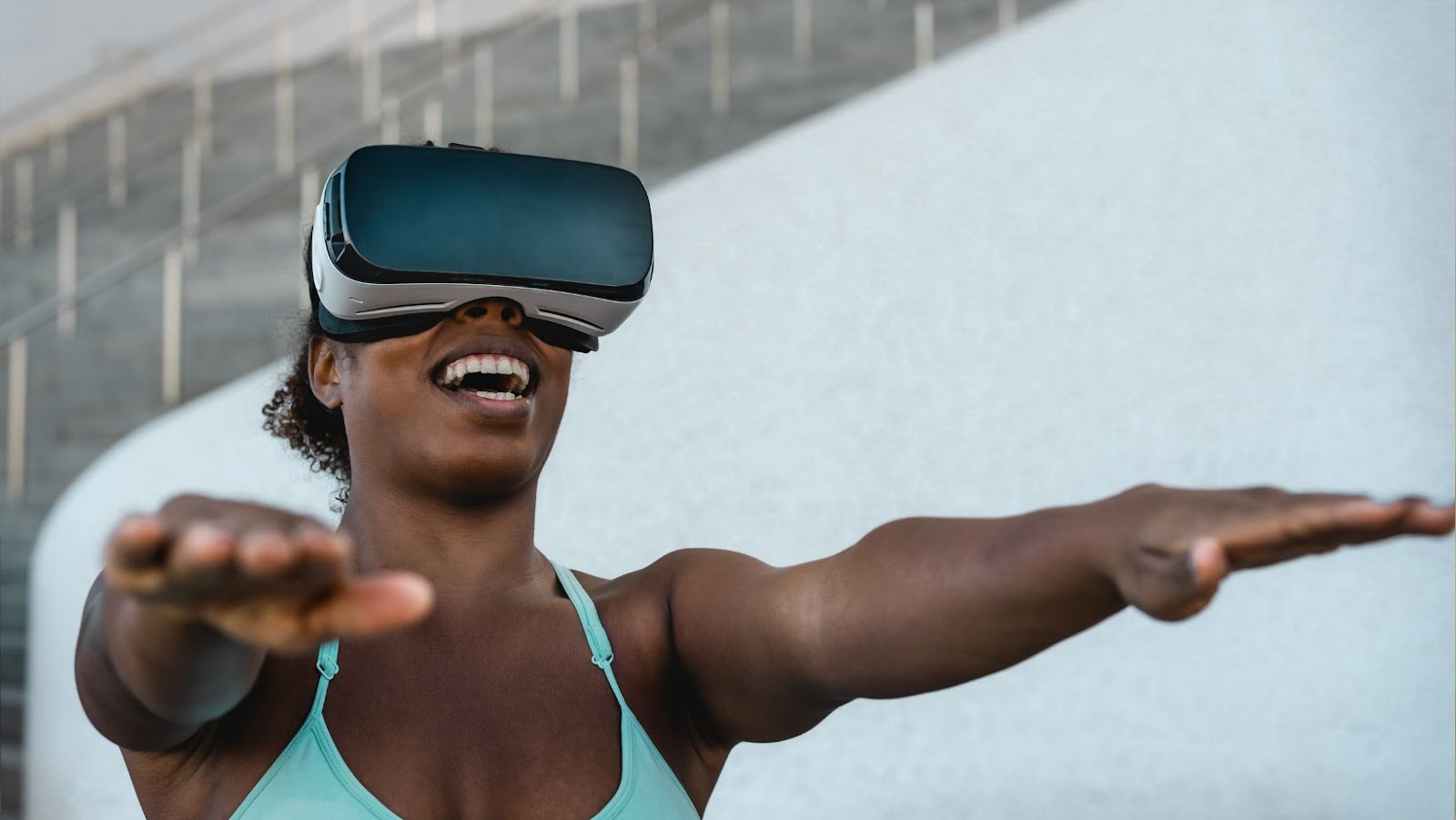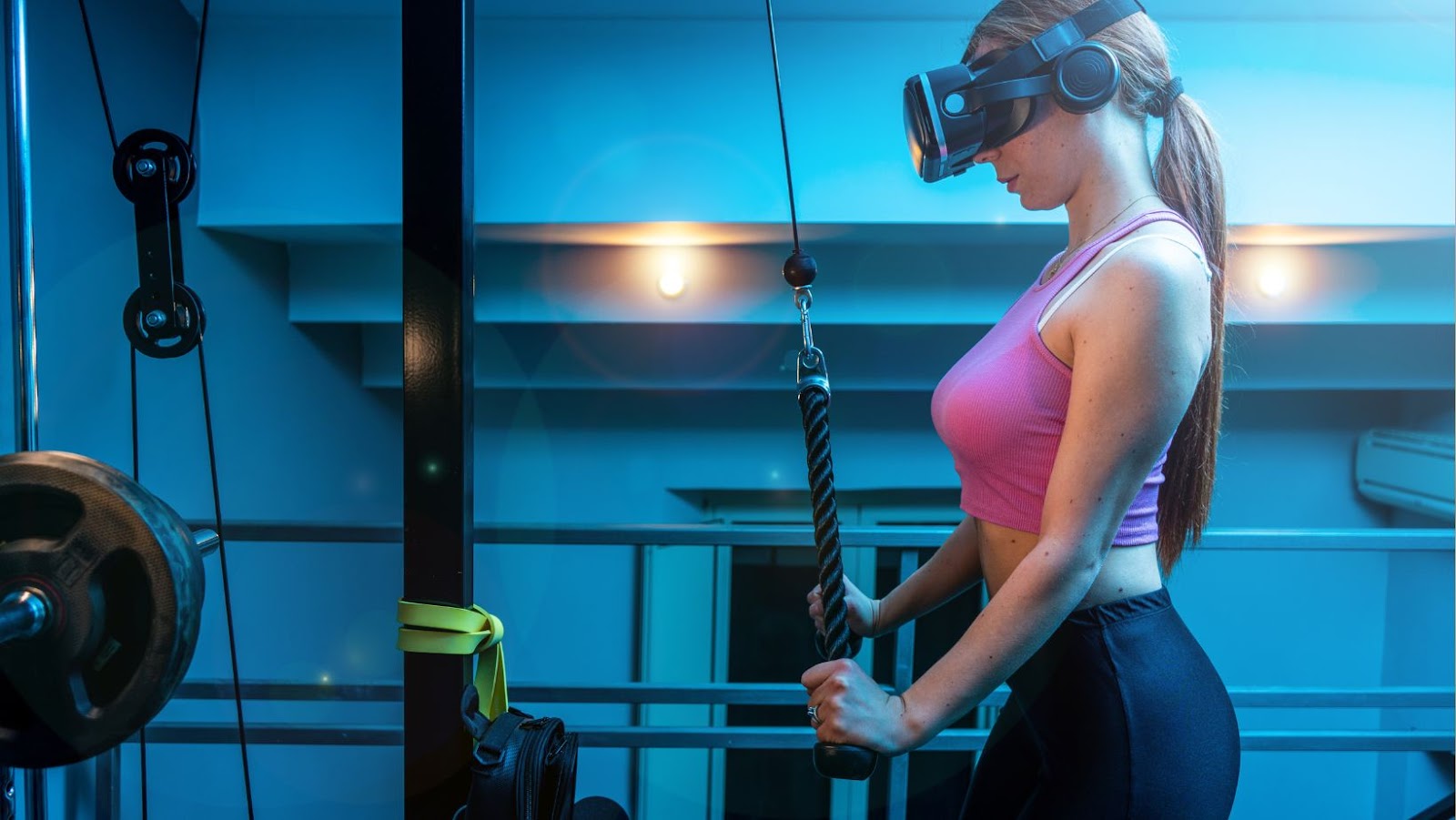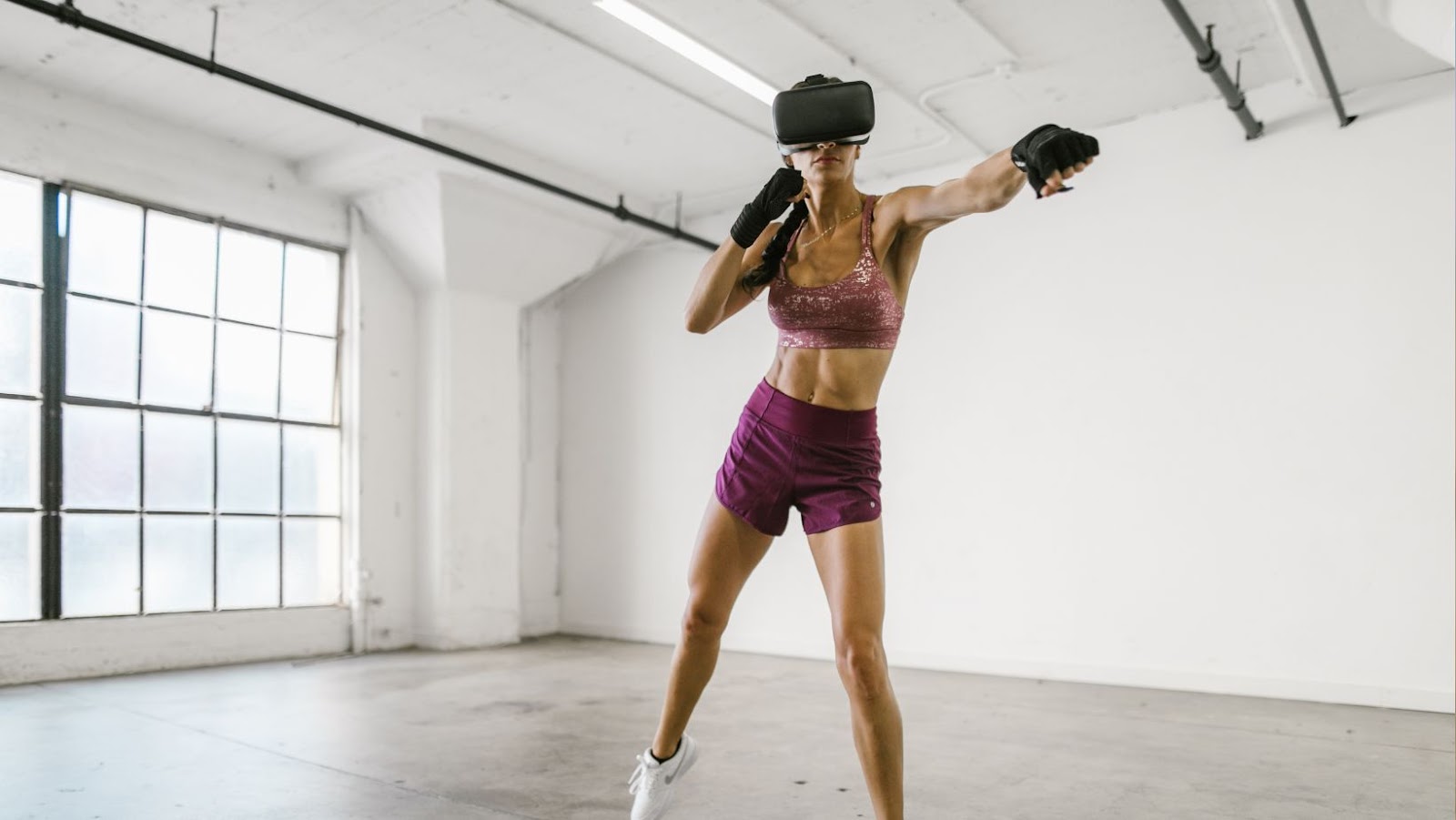 VR Fitness Accessories
VR Fitness Accessories
Commercial VR technology made its debut in the 1990s, but it wasn’t until the 21st century that it started influencing the fitness industry. The first major impact was seen in 2016, with the launch of headsets like Oculus Rift and HTC Vive. Catering to an audience bored with traditional workout methods, these devices transformed fitness routines into high-intensity gaming sessions. Coupled with accessories like haptic gloves and omnidirectional treadmills, VR brought dynamic, interactive workouts to the mainstream, helping users defy physical and spatial limitations.
To illustrate, the rise in VR-based workouts allowed for more engaging and diverse exercises. VR boxing, for instance, led users through rigorous workouts while increasing agility and reflexes. Similarly, dance-based VR games provided full-body cardio sessions, burning calories and improving coordination.
VR technology continues to evolve, with newer, more specialized hardware and software entering the market regularly, expanding the variety of VR fitness experiences available. No longer a novelty, VR has become a staple in the fitness industry, changing the way exercise happens, and proving, decisively, the power of VR fitness accessories.
 Top VR Fitness Accessories to Enhance your Workout
Top VR Fitness Accessories to Enhance your Workout
From innovative VR treadmills to resistance-based controllers, certain VR fitness accessories markedly enhance workouts, making them more engaging and beneficial. This article shines a light on a few handpicked trending accessories.
VR treadmills, like the Virtuix Omni, stand as significant game-changers in the world of VR workouts. They grant the freedom to move around in the virtual space, enabling a more immersive experience. These treadmills come designed with a low friction base and specialized shoes, facilitating movements in all possible directions. For instance, users can walk, run, jump, or even crouch, which simulate the actual actions in the gaming environment. Truly, VR treadmills open a new dimension to VR fitness, making the exercises not only fun but also intensely interactive.
Resistance controllers, another innovative add-on, improve VR fitness sessions. Products like the Tesla Suit offer unmatched interaction through their haptic feedback technology. Resistance controllers simulate physical barriers or weights in the virtual world. They add resistance to movements, mimicking pulling or lifting actions, therefore adding an element of strength training to the VR workouts. People find resistance controllers appealing as they can enjoy interactive games while subtly working on their strength improvement goals.
Weighed gloves and belts also come as salient VR fitness accessories. For example, weighted gloves like the CyberGlove add extra weight to the user’s hands, thereby making them use extra strength when they perform actions in the VR world. Similar to the gloves, weighted belts add more resistance to the lower body movements. These accessories provide a double advantage: they offer an engrossing gaming experience and help users achieve their fitness targets. They incorporate strength training into VR gaming, making the sessions more comprehensive. Weighed gloves and belts, thus, add a fresh twist to traditional strength training methods.
 How VR Fitness Accessories Influence Exercise Routine
How VR Fitness Accessories Influence Exercise Routine
Exploring VR’s intervention, it becomes apparent that VR fitness accessories profoundly impact exercise routines. They create immersive environments and boost workout intensity, redefining conventional fitness norms.
With advancements in technology, VR extends the frontiers of exercise modalities. Accessories like Oculus Rift, HTC Vive, and haptic gloves pull individuals into invigorating realms. These tools become instrumental in crafting batting cages, boxing rings, or galaxies where users perform their workouts. For instance, treadmills, not the standard ones, but omnidirectional VR treadmills transpose users into endless running lanes. This translocation effect amplifies the exercise experience, making it immersive and interactive.
Contrary to the assumption that VR workouts are a weak proxy for real-world exercise, VR fitness accessories enable a high-intensity workout. These include resistance controllers and weighted belts that incorporate strength training into VR gaming sessions. For example, VR boxing paired with weighted gloves turns a typically fun cardio activity into a full-fledged high-intensity workout. It isn’t just the heart racing; users experience the burn in their biceps, triceps, and shoulders. Hence, VR accessories enable users to experience unparalleled workout intensity, irrevocably transforming their exercise routines.